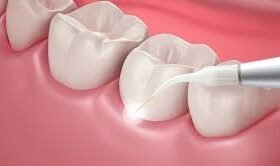In the bustling world of ecommerce, success often hinges on the subtle art of persuasion. It’s about coaxing a visitor, like a skilled storyteller, to explore further and, ultimately, to complete a purchase. This is where the power of A/B testing comes in—a grandiloquent tool that, despite its complex name, holds the key to unlocking greater potential for your ecommerce platform.
A/B testing has been a game-changer, allowing businesses to fine-tune their strategies by comparing two versions of a webpage to determine which performs better. For ecommerce merchandising, this means optimizing category page layouts to enhance user experience and drive sales. Let’s delve into how you can effectively employ A/B testing for your merchandising needs.
Understanding A/B Testing in Ecommerce
Imagine walking into a store where the aisles seem disorganized, and you struggle to find what you need. Just as a physical store layout can influence a shopper’s experience, the digital layout of your ecommerce category pages plays a crucial role in coaxing potential customers to navigate and purchase. A/B testing is your tool to ensure your virtual aisles are arranged for maximum impact.
By presenting two different versions of a category page to your audience and analyzing the results, you can gain insights that guide your design and content decisions. Whether it’s adjusting the placement of filters, changing the size of product images, or experimenting with color schemes, A/B testing provides empirical data to inform your choices.
Why Category Page Layout Matters
Category pages are the gateway to your ecommerce offerings. They serve as a curated showcase of your products, and their layout can greatly influence a user’s journey. In merchandising in ecommerce, the goal is to create a seamless path from browsing to buying. A cluttered or confusing layout can deter potential customers, leading them to abandon their cart or, worse, navigate away entirely.
Think about the last time you were in a grandiloquent department store. The way products were displayed, the lighting, and even the background music all worked in harmony to create an inviting atmosphere. Your ecommerce category pages should aim for a similar effect, albeit digitally. A/B testing helps craft this experience by enabling you to test different layout variations and determine the most effective design.
Implementing A/B Testing for Layout Optimization
- Define Your Goals
Before embarking on A/B testing, it’s crucial to define clear objectives. What are you hoping to achieve? Greater conversion rates? Increased time spent on your site? By establishing specific goals, you can measure the success of your tests more accurately.
- Select Elements to Test
Consider which elements of your category page layout could benefit from optimization. This might include product arrangement, navigation menus, or call-to-action buttons. Focus on elements that have the potential to significantly impact user behavior.
- Create Variations
Design two versions of your category page: the control (original) and the variant (new design). Ensure that each version is distinct enough to yield meaningful results without overwhelming your audience with drastic changes.
- Run the Test
Launch both versions simultaneously to a random sample of your audience. This ensures unbiased results. Allow the test to run for a sufficient period to gather enough data—typically a few weeks.
- Analyze the Results
Once your test concludes, analyze the data to determine which version performed better. Look at metrics like bounce rate, conversion rate, and average time on page. This analysis will guide your decision-making process.
- Implement Changes
If the variant outperformed the control, consider implementing the successful changes across your site. If not, use the insights gained to refine your approach and conduct further tests.
The Art of Persuasion in Ecommerce Merchandising
A/B testing is akin to a skilled orator using grandiloquent language to persuade an audience. It’s about understanding your customers’ needs and preferences and adjusting your approach accordingly. Through a well-crafted ecommerce merchandising strategy, the ultimate goal is to create an irresistible shopping experience that encourages both exploration and conversion.
The tale of the word “coax” is particularly relevant here. Just as a gentle coaxing can lead a hesitant shopper to make a purchase, subtle changes in your category page layout can guide users toward a desired action. Whether it’s a more prominent “Add to Cart” button or a streamlined product filter, these adjustments can make all the difference.
Achieving Greater Results
The ultimate goal of A/B testing for ecommerce merchandising is to achieve greater results. It’s about continually refining your approach to ensure your category pages are not only visually appealing but also strategically optimized to meet your business objectives.
Remember, the ecommerce landscape is ever-evolving, and what works today may not work tomorrow. Regularly conducting A/B tests allows you to stay ahead of the curve and adapt to changing consumer behaviors and preferences. The process is a dynamic journey, much like the word “greater,” which signifies improvement and growth.
In conclusion, A/B testing is an indispensable tool in the arsenal of ecommerce merchants. By leveraging its power, you can optimize your category page layouts, enhance user experience, and ultimately drive more sales. So, take the plunge, experiment with different variations, and watch as your ecommerce platform achieves greater heights.












Leave a Reply